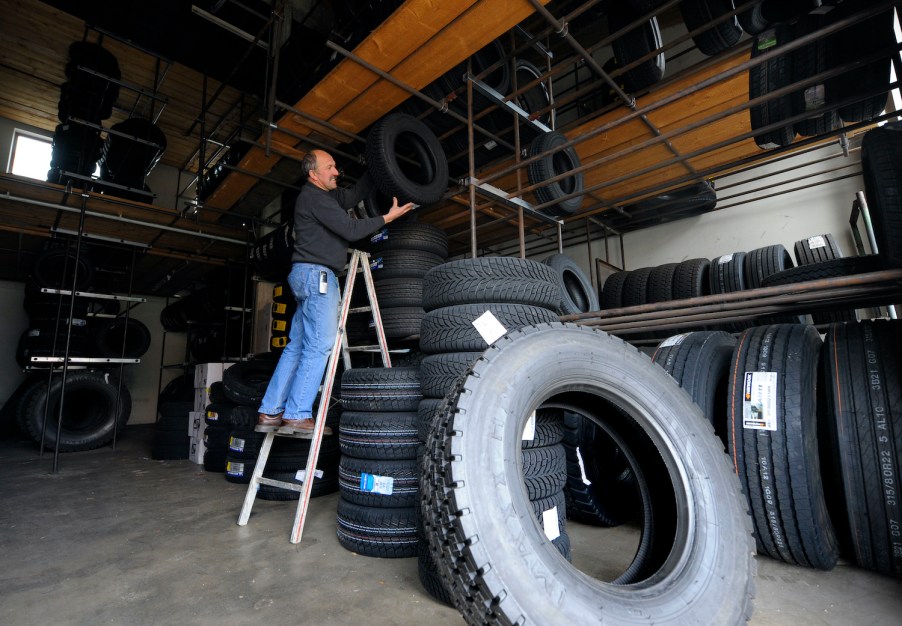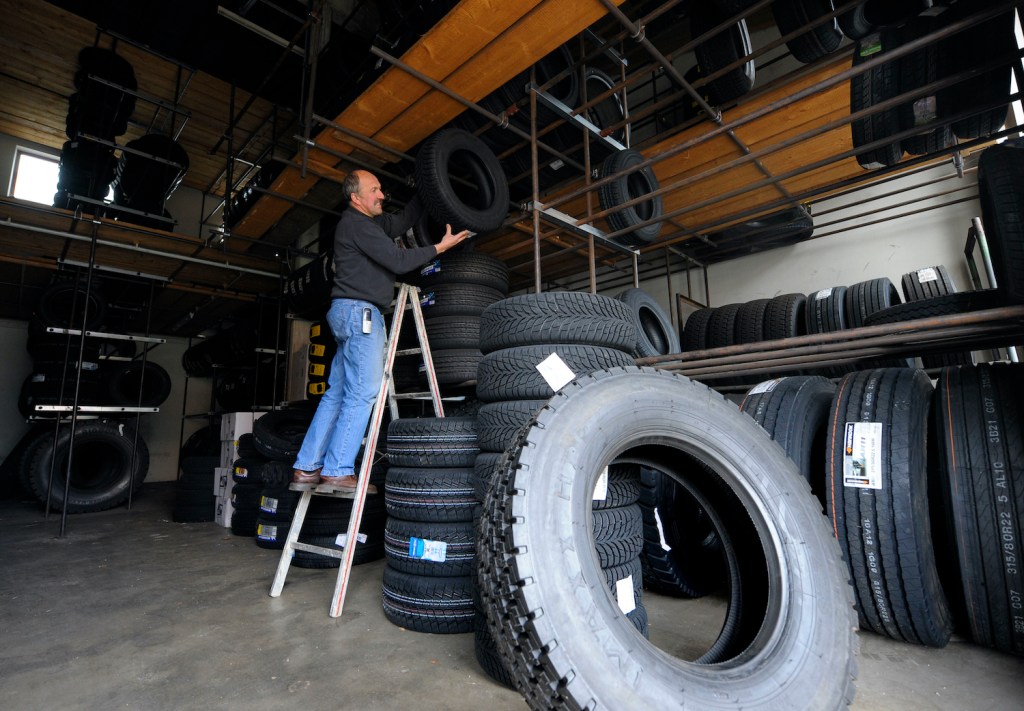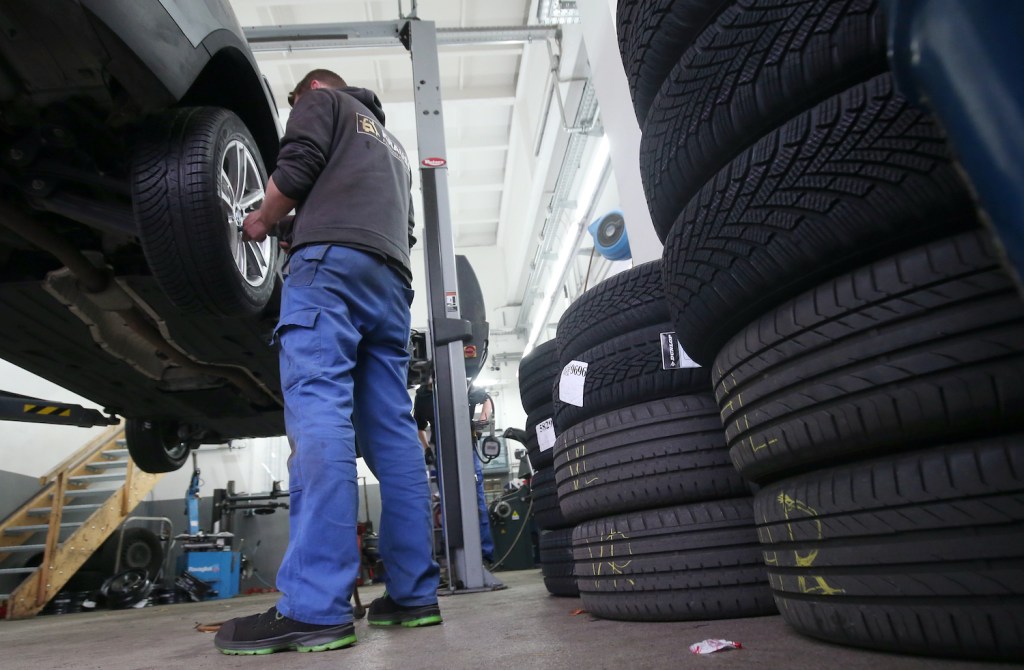
Common Tire Types And Ideas For Aftermarket Tire Upgrades
Choosing the right type of tire is one of the most important vehicle maintenance choices you can make. But all the different types of tires can be confusing. Here is a basic overview of the four most common tire types. As a bonus, we are including four aftermarket tire upgrades most people do not know about.
Common Tire Types

When choosing tires, your first consideration should be the weather in which you’ll be driving. Many modern cars come equipped with all-season tires. Though engineers design these tires to function in all conditions, they only offer average performance. If you live in a place with a long winter, consider separate sets of tires for the summer and winter. You will find seasonal tires offer better safety and performance in their respective seasons and can save you money in the long run. Common tire types include:
- Summer/Performance tires
- Three-season tires
- Winter tires
- All-terrain tires
Drivers in warmer climates can opt for Summer or “Performance” tires. Many of these tires work on either dry or wet pavement. Some of these tires are designed exclusively for dry pavement. They are often made of a softer, “stickier” rubber and are a favorite tire of sports car owners.
Manufacturers offer three-season tires for wetter and more difficult driving conditions. Three-season tires offer a pliable rubber that will perform well all summer but not have much traction at freezing temperatures.
Winter tires have an aggressive tread designed for maximum traction in ice and snow. They feature a stiffer rubber designed to maintain traction at freezing temperatures. Studded winter tires boast metal studs for added traction in icy conditions. Unfortunately, studded tires break down road pavement, so many states only allow them in winter months.
If you often find yourself on dirt or gravel roads, you may prefer an all-terrain tire’s traction. However, note that your fuel mileage, tire lifespan, and pavement traction may decrease with an all-terrain tire–while your noise level increases.
Ideas To Have Aftermarket Tires Upgraded

If you want to upgrade with aftermarket tires, you have several choices to make. First, do you want to keep the same size tire your vehicle had stock? Second, do you want to upgrade from stock, common tire types, to more capable tires? Finally, are you interested in specialty tires designed for performance, fuel-efficiency, or to last longer?
Remember, not only is it safest to replace your tires with the same size your vehicle manufacturer recommends, most standard tire shops will refuse to install larger or smaller tires on your vehicle. This is because larger tires may rub against your wheel well while turning or going over a bump, and smaller rims may interfere with your brake components. In addition, any tire with a different overall diameter will change your speedometer and odometer readings and could lead to ABS or traction control malfunctions.
Tire Types That Will Upgrade Your Ride
You are safe to upgrade the load index and speed rating with your replacement tires. Tires with a higher load index or speed rating offer a greater weight capacity or a higher top speed. But they may “perform” better at the cost of a stiffer, noisier ride, so be sure to do your research. Learn more about your tire load index.
One upgrade option is to choose premium tires designed to last longer. Some tires are manufactured with higher quality rubber compounds, stiffer rubber, or have a thicker tread pattern and will take longer to wear down. Most new tires come with a mileage warranty. These can range from 30,000 to 100,000 miles. A more extended warranty is a good indicator that the manufacturers expect their tires to last a long time. Though tires with a lower mileage warranty often claim a lower price, you will have to replace them sooner and pay to have their replacements mounted and balanced. Therefore, investing in the longest-lasting tires, you can afford is a great way to save both money and time in the long run.
You can also seek out tires that offer better fuel mileage, are quieter, or boast a smoother ride. In addition, you can look for tires with better traction on pavement or off-road. You can even shop for tires that corner and accelerate better than stock.
When speaking with a tire salesperson, do not be afraid to make your needs and preferences clear. Ask questions about the tires you are considering. If you select your tires a few days before going to the store or shop to have them installed, the salesperson may be able to order specialty tires just for you.
Sources: Tire America and Popular Mechanics
RELATED: NHTSA Tire Grades Tool Will Help You Buy the Best Tires







